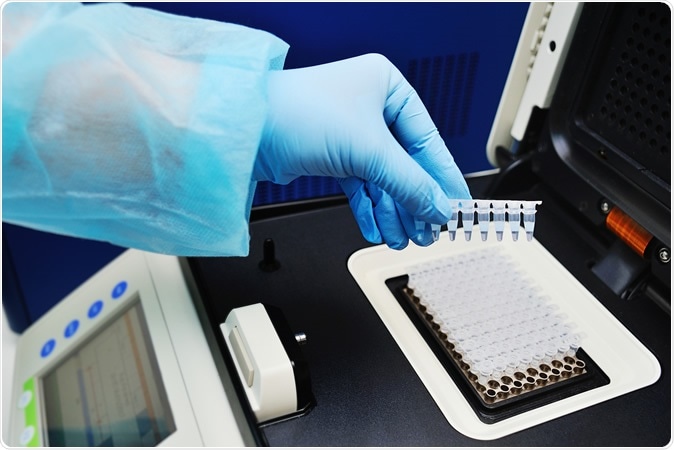A new study from Pakistan suggests 'smart sample pooling' using population grouping with algorithms as a solution to the unavailability of test kits for severe acute respiratory syndrome coronavirus 2 (SARS-CoV-2). SARS-CoV-2 is a virus that causes COVID-19 disease. The paper is published on the preprint server medRxiv on April 28, 2020.
Countries all over the world are suffering from the unavailability of diagnostic tests, as cases continue to rise. Large-scale population screening as a preventative for community spread of the disease is not possible due to these shortages. The disparity between the required number of reagent kits and the actual number available has obstructed the efforts of health officials to identify and isolate infected individuals. In most, test kits are restricted mainly to symptomatic cases, with the vast number of asymptomatic cases going undetected.

Study: Smart Pooled sample Testing for COVID-19: A Possible Solution for Sparsity of Test Kits. Image Credit: Evgeniy Kalinovskiy / Shutterstock
Using pooled samples
This new study from Lahore University suggested pooling a large number of samples from multiple suspected cases and testing them collectively, rather than individually. The exact number of samples to be pooled per test depends on the community.
"...the optimum number of samples to be pooled for a single test may be determined based on the total positivity rate of the particular community," the researchers said.
COVID-19 infection is diagnosed with a polymerase chain reaction (PCR) test on the patient's nasal or bronchial secretions. The test requires specific expertise and equipment, a challenge that has severely limited the ability of health authorities to mass-screen the population, especially in developing countries.
The research team says the new strategy has twin benefits - optimizing the reagent kits available and reducing the workload on laboratory staff.
The paper cites data showing that the majority of people tested across the world have tested negative for the virus. It suggests that sample pooling might help eliminate large groups of negative cases.
The issues with pooled sample testing
There are two potential issues with this strategy - one, that a positive sample may test negative when diluted with many negative samples. However, the study refutes this limitation, stating that a PCR test can identify even a small viral load and that positive specimens generally have a high number of viral particles. It cites data suggesting that a PCR test can detect a positive case even when it is diluted with up to 64 specimens.
The other concern is that a single positive specimen in a group may make it necessary to repeat tests on all the individuals in that group, and hence lead to more tests being needed. The researchers say this is where the algorithm comes in - it helps narrow down the number of repeat tests until the positive specimen or specimens are identified.
Divide and conquer
The strategy proposed is called "divide and conquer." Suppose a group of eight people is tested collectively, and their combined result is positive. The eight will be divided into groups of 4 each, and again tested. If one group tests negative, the other group will be further divided in half and tested, and so on till all the positive cases are found.
The idea is simple - if one group tests negative, the other is by default considered to be positive without testing. If one tests positive, the other is also tested to rule out the possibility of both being positive.
The number of samples to be tested in one sample pool depends on the community, researchers say. To find this, they used a simulator to analyze different countries to find the Test to Positive Ratio (TPR) or the ratio of the number of tested cases to the number of positive cases.
The results showed that if a country had a high TPR, it would require a higher number of test kits, while low TPR required a lower number of test kits.
Simulation results
The simulator showed that the strategy would be most effective in reducing the number of test kits for every 10,000 people in countries with a TPR below 30. Larger group size could be used for countries with a TPR below or around 10, while a group size of 2 was better for a TPR above 15. The strategy was not recommended for countries with a TPR above 35, stating that it would require more tests than individual testing methods.
The final message
The research team suggested that employing sample pooling based on TPR might significantly reduce costs associated with the pandemic while keeping test outcomes unchanged. The use of algorithms to identify how many specimens should be pooled for a single test would help screen communities for COVID-19 at less cost without compromising on efficiency.
Important Notice
medRxiv publishes preliminary scientific reports that are not peer-reviewed and, therefore, not be regarded as conclusive, guide clinical practice/health-related behavior, or treated as established information.